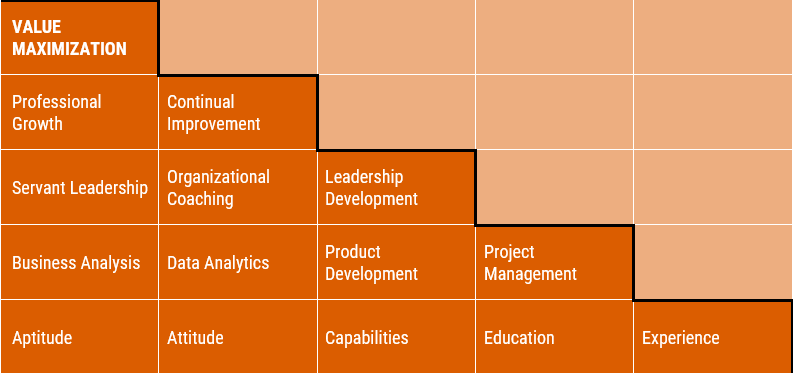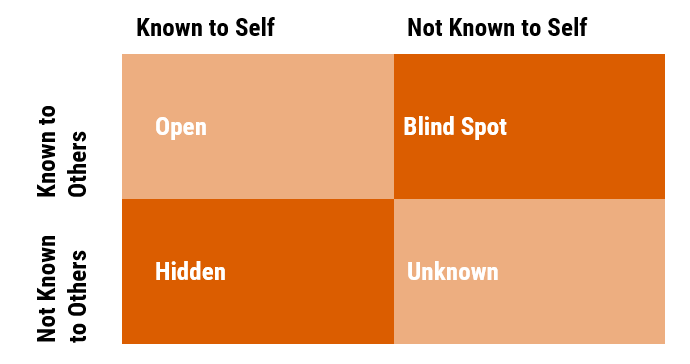How to Plan for Professional Development
Receive free IIBA updates and exclusive content!

Investing in professional development is critical for business analysis professionals, as well as those who lead business analysis teams.
Independently, team members can correct, build, and enhance competencies. This results in both personal confidence and a boost in team performance.
But, according to Gestalt psychology, the team as a whole also benefits from these individual contributions, becoming greater than the sum of its parts.
Maximizing Value
To help leaders of business analysis teams achieve this, let me introduce the concept of the value maximization staircase. It contains five steps to maximize the value delivered by business analysts:- The fifth level (bottom) represents their internal attributes.
- The fourth represents important functions to achieve success.
- The third represents key behavioural styles to model.
- The second represents the mindset and effort required to realize your potential.
- The first (top) represents the culminating value from the preceding steps.

Table 1: Value Maximization Staircase
Several tools can be adapted to fit professional development activities. As an individual contributor, I like to start by discovering my inward development needs through introspection. I then review outward development options through extrospection.
For example, if I really want to improve my database querying skills, I’ll evaluate which database query languages to explore. Then, I’ll determine what training opportunities are available in the market.
The Johari Window
In 1955, psychologists Joseph Luft and Harry Ingham developed the Johari Window—a psychological model to discover conscious and unconscious biases. Self-assessment and assessments completed by team members are key to the model’s effectiveness.An amalgamation of the psychologists’ first names, “Johari” speaks to the desired effect of the model. By combining both assessments, you merge your reality with the reality of others to build a comprehensive picture of yourself.
A powerful self-awareness tool, the Johari Window will reveal:
- What you and others know to be true of yourself (open).
- What you know to be true of yourself, which you hide from others (hidden).
- What others know to be true of yourself but of which you’re unaware (blind spot).
- What you and others don’t know to be true of yourself (unknown).

Table 2: The Johari Window
After brainstorming my needs and goals, I perform a gap analysis to see where I am and where I need to go. The result will determine the available options. No-cost or low-cost training and certification options are increasingly available to upgrade your skills where necessary.
Playing It SMART
Once I’ve established the viability of a specific development option, I add SMART criteria to paint a clear picture of success. A critical element is to consider how you’ll achieve your developmental goal—e.g., academic degree, certification, course, research, training.The example below contains the items to consider when brainstorming a specific developmental goal.
- Specific—I want to teach part-time as a university professor.
- Measurable—I’ll apply for three open adjunct faculty roles for the next semester at the local university.
- Achievable—I’ll reach out to department leaders at a local university to determine availability based on student demand.
- Relevant—I want to draw upon my experience and passion for teaching to enable students to realize their potential.
- Time-bound—I’ll do this within 12 months of graduation.
A backlog will help you track your progress and provide historical context for future endeavours.
Ready to certify your future? IIBA offers a variety of globally recognized business analysis certifications. Explore the full suite of professional certifications today.
About the Author

John B. Reeves is a creative business technology leader focused on achieving positive business outcomes through empathic interaction, thoughtful design, and reliable support. He currently serves as a Lead Business Analyst and Supervisor at the City of Charlotte (N.C.).



